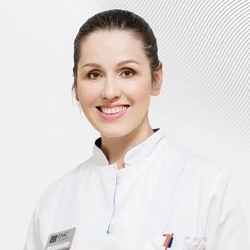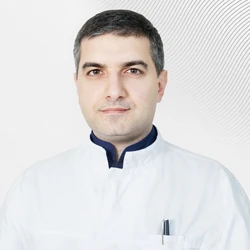Spring is a wonderful time. But not for everyone, the awakening of nature after winter promises joy. For some, spring romance may turn into a completely non-romantic state. A stuffy, swollen nose, swollen and watery eyes are the typical appearance of a person with seasonal allergic rhinitis and conjunctivitis. Sneezing and runny nose make it difficult not only to breathe, but also to communicate, and tears and itchy eyes prevent you from admiring the sun and flowering.
In the spring, it is the flowering of trees that causes allergic rhinoconjunctivitis. People suffering from this disease are not at all happy about the appearance of bright greenery on birch and alder trees. For them, this is a signal to start taking anti-allergic drugs.
Pollinosis (from English Pollen - pollen) was first called hay fever. In 1819, the English physician John Bostock made the first official report about this disease. At that time, it was believed that the appearance of symptoms in May and June was associated with mown grass, which later becomes hay. It wasn't until 1873 that Charles Blackley proved that plant pollen was the cause of malaise. In Russia, the first official report on pollinosis belongs to Dr. L. Silich, who made it in 1889 at a meeting of the Society of Russian Physicians in St. Petersburg.There are several periods of flowering plants. In late April and early May, pollen from birch, alder, hazel, oak, and linden trees becomes the cause of the malaise.
It is popularly believed that poplar fluff causes the development of symptoms in June. But due to its size, it cannot penetrate the respiratory tract, and besides, it is not pollen, but only a filler for poplar fruits, which carries small pollen particles and therefore poses a significant allergenic danger.
In late June and early July, cereal plants begin to bloom (rye, wheat, oats, barley, timothy, hedgehog, ryegrass, wheatgrass). The flowering period of weeds (wormwood, ragweed, quinoa) falls at the end of July - beginning of September. Therefore, it is not surprising that seasonal rhinoconjunctivitis can last until autumn or begin at the very end of summer, when, it would seem, nature is preparing to wither.
Not everyone knows the fact that during the flowering period of allergen-significant plants, a pathological reaction to certain products, the so-called cross allergy, may appear. For example, rhinoconjunctivitis in birch blossoms may be accompanied by similar symptoms when eating carrots, hazelnuts, apples, peaches. If the patient reacts to the flowering of cereals, then it is not advisable for him to eat sorrel. And those who are "not friends" with wormwood, citrus fruits, honey, and sunflower seeds will make them itch and cry.
The most characteristic symptoms of pollinosis are nasal congestion, the appearance of clear mucus, itchy nose and sneezing. My eyes also start to itch, turn red, and watery eyes get worse. With a severe allergic reaction, general malaise, a feeling of heat, and irritability may appear. Sometimes the disease does not manifest itself with all the symptoms, and the general condition does not change at all. Then the diagnosis is not entirely obvious. But if a child has a stuffy nose in the morning or acute respiratory infections become more frequent during the flowering period, parents may suspect a pathological reaction of the mucous membranes to plant pollen.
Different methods are used to diagnose pollinosis. To distinguish acute respiratory viral infections from manifestations of allergic rhinitis, nasal mucus is microscopically examined. According to the ratio of cells in the smear, it is concluded that an inflammatory or allergic process prevails.
Allergy testing is more thorough. It is possible either in the form of skin tests, when a solution containing allergens is applied to the skin after a light injection, or by assessing the presence of specific antibodies in the blood to proteins contained in pollen. These methods allow us to answer the question of which plants the patient should avoid. Those who have experienced the symptoms of hay fever for the first time will certainly need the help of a doctor. The doctor will help make the correct diagnosis and prescribe treatment, as well as recommend further medical care tactics, since it is important not only to relieve symptoms during an exacerbation, but also to prevent the occurrence of pathological reactions in the future. Fortunately, this is currently possible. Those who have had reactions for several seasons should monitor pollen monitoring, which predicts the onset and intensity of flowering of certain plants, and also remember that some time before the start of plant pollination, medications should be taken that allow the body to withstand the onslaught of pollen storms more stoutly. And the best part is that pollinosis can be cured! The use of microdoses of an allergen to "habituate" the body to it has become an achievement of medical science. This method is called allergen-specific immunotherapy (ASIT).Doctors of various specialties: pediatricians, ophthalmologists, otolaryngologists, allergists - are ready to help their patients with allergic rhinoconjunctivitis make life more comfortable in the conditions of flowering. After all, nature gives us beautiful colors and smells of flowering so that we can enjoy them!
Questions and answers
.webp)






















.webp)








.webp)

.webp)



